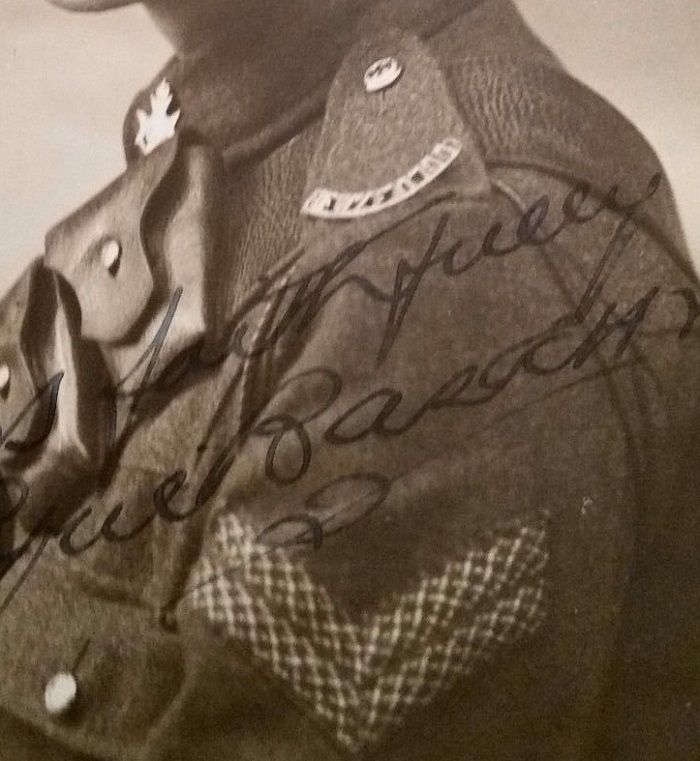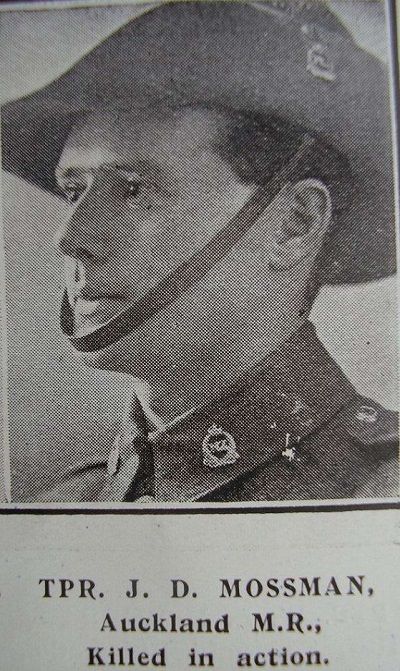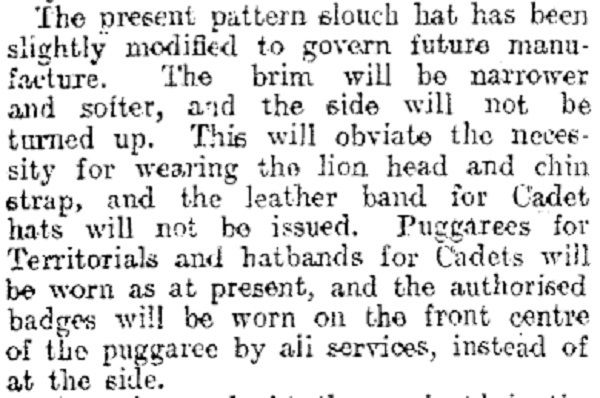Quote:
Originally Posted by sigcollector

Thanks Brent
Interesting that the title is blackened.
I will take a high res scan of the photograph once it arrives to see if any other detail appears.
Regards Jonathan
|
Jonathan, very little has been written about the history of felt hats worn by NZ military forces from 1891-1953, and although I have been researching it for many years, I have still only scratched the surface.
If you can enhance Bassett’s photo I would be very keen to confirm that the outer edge of the brim is void of either stitching or fabric trimming? And that there is definitely no press stud visible in the photo?
In regards to the “blackened” title on Bassett’s hat, it is interesting that it does not match the brass “New Zealand” title he is wearing on the shoulder, although given that Bassett was about to receive the Victoria Cross, it is very possible it is one from the 50 pairs of Bronze New Zealand titles that was produced for officers out of the 2050 pairs of titles that were made for the NZ High Commission.
The fact that Bassett is photographed wearing his corporal stripes narrows down the photo to have been taken between the 8th October 1915 and the 7th February 1916.
Interestingly Bassett’s shoulder board does not have any piping, so it is very likely it is a British made tunic.

Interestingly Cyril Bassett appears to have joined the Auckland Divisional Signal Company in early 1910, and although this was a cross over period from the NZ Volunteer system to the Territorial system, under the 1909 Defence Act, during the year 1910-11 the Defence Forces were regarded as in a state of transition, and only khaki Service Dress uniforms could be obtained for recruits.
(In February 1911 the field service cap/side cap was obsoleted in favour of the Slouch hat, and the Service Dress peaked cap (known then as an Austrian cap) was also authorised as the only headgear to be worn by NZ Territorials and cadets)
The first New Zealand Government contract (for two years and a second contract for another two years) to produce 10,000 military felt hats (with adjustable chin strap that did not require buckles) was given to Wellington hat makers National Hat Mills who produced all of their early hats out of fur felt, which was considered at the time to have.—
“qualities which the wool felt hat does not possess.”
(The lemon squeezer in my avatar is a rare National Hat Mills made fur felt hat)
National Hat Mills began supplying felt hats to the Territorials and cadets from April 1911, at the moment I am not 100% sure what Bassett would have worn hat wise prior to April 1911, but most definitely he would have been issued a National Hat Mills hat prior to his embarkation with the NZ Main Body Expeditionary Force.
The photograph of Bassets hat without a brim press stud? — Could possibly rate Bassets felt hat as a 2nd Pattern British issue (with clip attachment) that was worn by NZEF circa May 1915 onwards.
I had previously thought the British made felt with clip attachment and fabric around the Brim was the 2nd Pattern British issue, but Bassett’s brim not having any trim looks to be earlier. (In my opinion Puks felt hat with its stitched brim and thick construction is a 1917 economy version)
The 1st Pattern British made felt hats issued to New Zealand Forces during the war were issued to the British Section that was formed in England, and went into Bulford Camp on the Salisbury Plains on the 4 Oct 1914. (Some men of the British Section purchased their own uniforms instead of waiting to be issued one)
The following British Section photo shows a 1st Pattern British made felt hat with a press stud above the collar sized NZ Onward badge on the hat of James Dilworth Mossman who was killed in action in May 1915.
Mossman’s brother, Thomas Henry Mossman (2nd Reinforcements Otago MR) died on the 12th April 1915 after contracting bronchitis and pneumonia.
(The British Section puggaree was the same as the khaki/red/khaki infantry puggaree, except that it had an extra red fold at the top, they also wore New Zealand in white on a red background shoulder title)

Interestingly as you’re a Signals fan, you might be interested to know that the Commanding Officer of the British Section Captain Francis Henry Lampen whose military service started out as Lieutenant in the Antrim Artillery (Southern Division) in 1897, and then with the Indian Staff Corps from 1900 to 1904.
In March 1907 Lampen filed a Patent for Wellington Signal flags, and in July 1907 filed a Patent for a range finder.
Some early felt hat info
The order to turn the brims down and the order to place the regimental and corps badges to the front of the felt hat for some reason is often quoted as being September 1916.
The NZEF HQ in Europe did order the brim down so as to easily distinguish the New Zealander from the Australians, but this appears to have taken place in either late February or early March 1916.
The following Auckland newspaper clipping is from the Evening Star published on the 13th May 1914.
It clearly shows that the idea to modify the felt hat dress regulation was much earlier.
 The adoption of the Lemon Squeezer
The adoption of the Lemon Squeezer
The first and only NZ military unit under the then new Territorial system to be given official permission in the 1912 NZ Dress Regulations to wear the felt hat with its brim horizontal and its crown peaked was the Boy Scout Cadets who had been wearing it since 1908 when the Scouting movement was authorised in New Zealand.
The first Territorial regiment to wear the felt hat with its brim horizontal and its crown peaked appears to be the 17th Ruahine Infantry Regiment.
Unfortunately Brigadier-General Sir Herbert Hart who claims the Lemon Squeezer style adopted by the 17th Ruahine Regiment was his idea when he was then a Company commander of the 17th, did not record the actual date they adopted the lemon squeezer shape, although General Hart did say.—
“Upon the outbreak of war in August 1914, the Ruahine Company turned up wearing the peaked hat, and the other three companies were wearing the old-style one.”
As to when the 17th Ruahine Regiment adopted the Lemon Squeezer style, it is very possible it may of happened in late July 1914, as this was when the Area Group Officers were reassigned. (The redistribution included, area officers and warrant and non-commissioned officers)
General Harts account continues.—
“As 2IC I was in charge until Colonel Malone reported at camp about a week later (17th August 1914). Something had to be done about the hats, to obtain uniformity in the battalion”.
General Harts account continues.—
“I remember the Colonel and I had discussed the pros and cons fully, he arranged a couple of men from Ruahines and a couple of men from the Taranaki Company to parade near his tent and we made a careful examination and comparison. I was able to convince him that the peaked hat was more distinctive and striking and it was adopted.”
(Colonel Malone was obviously a fan of the Lemon Squeezer shape as he is photographed in 1902 as CO of the Stratford Rifles wearing his felt hat in the Lemon squeezer style.
The whole of the Wellington Infantry Regiment adopted the Lemon squeezer shape by the 24th August 1914.